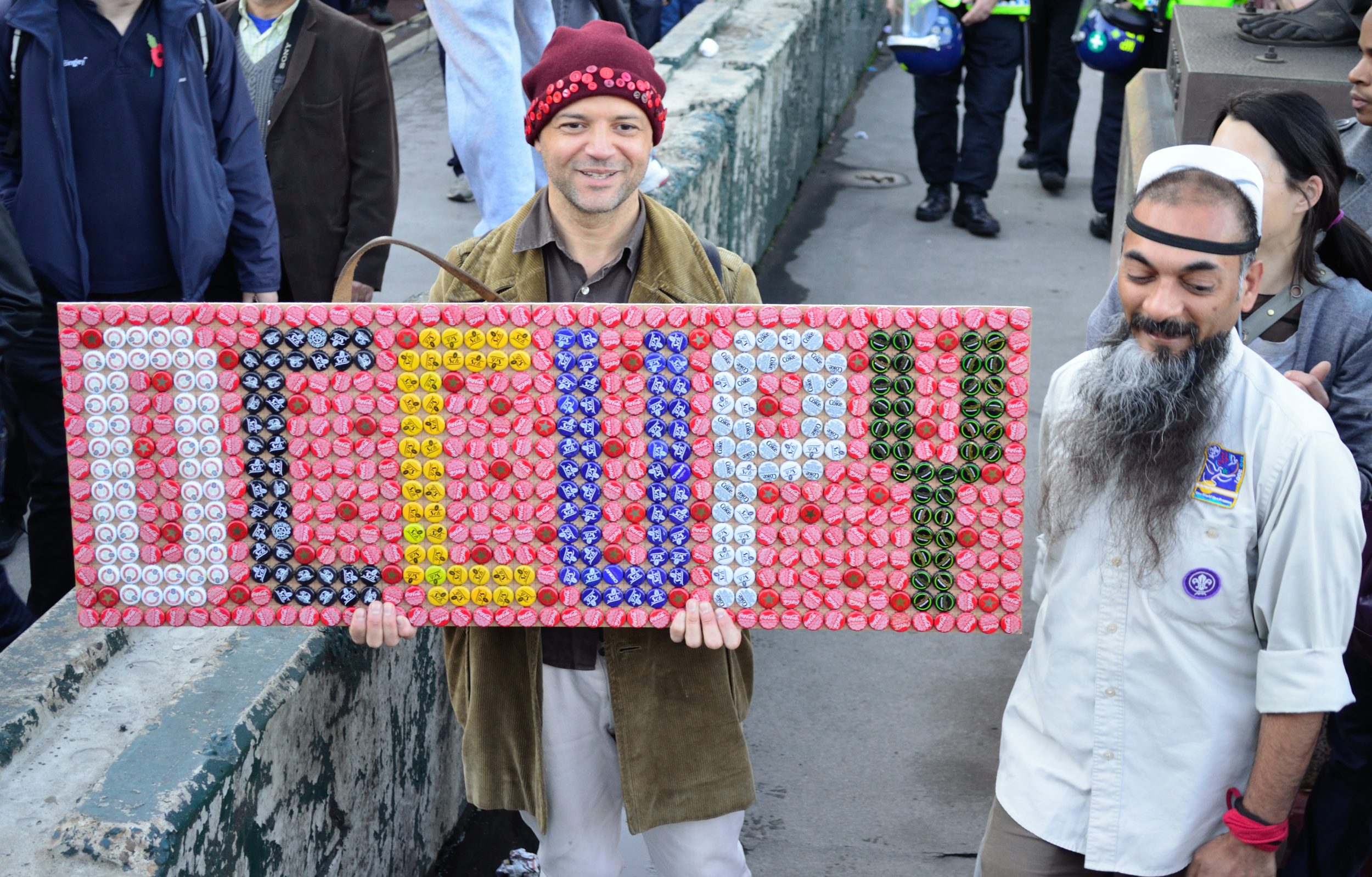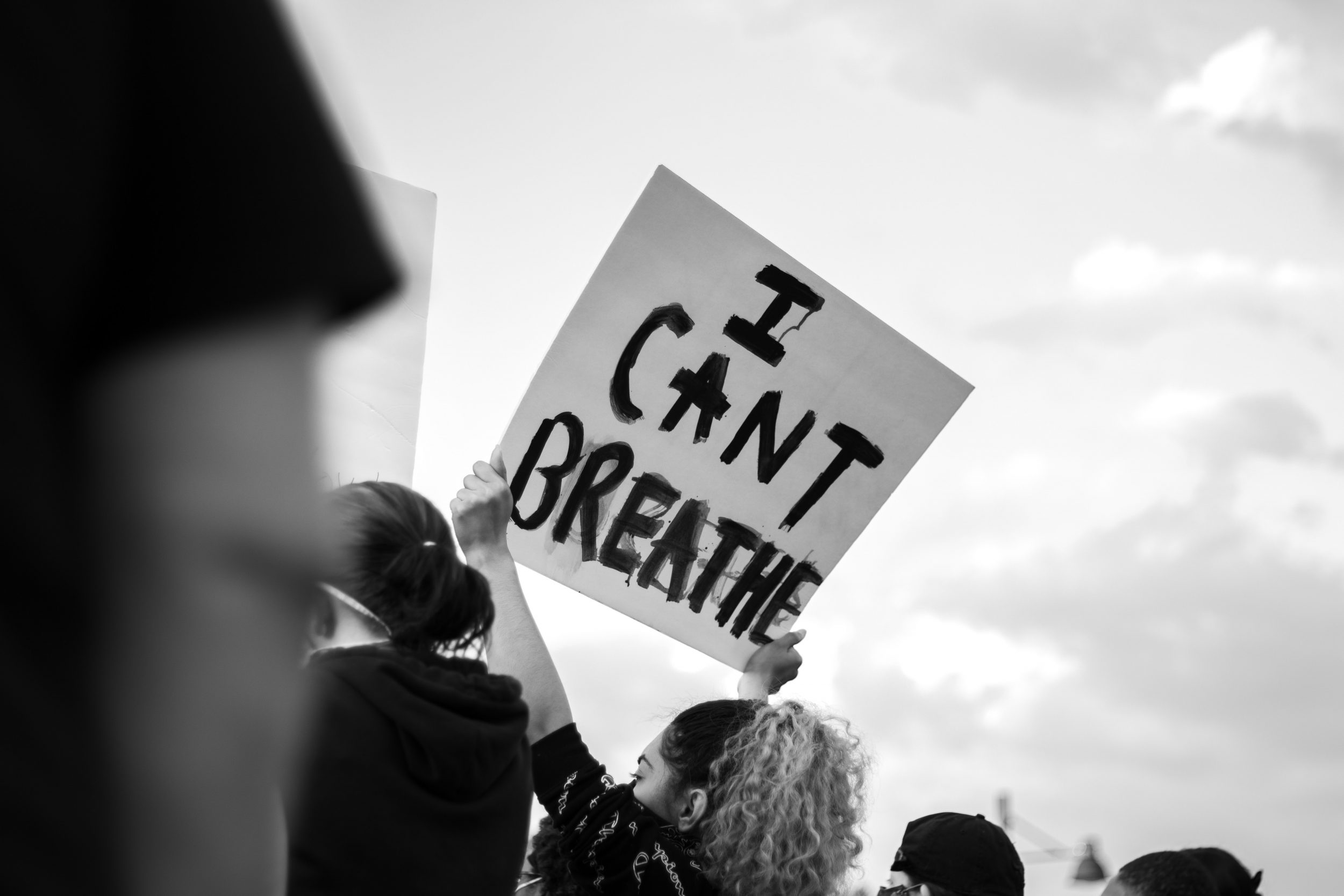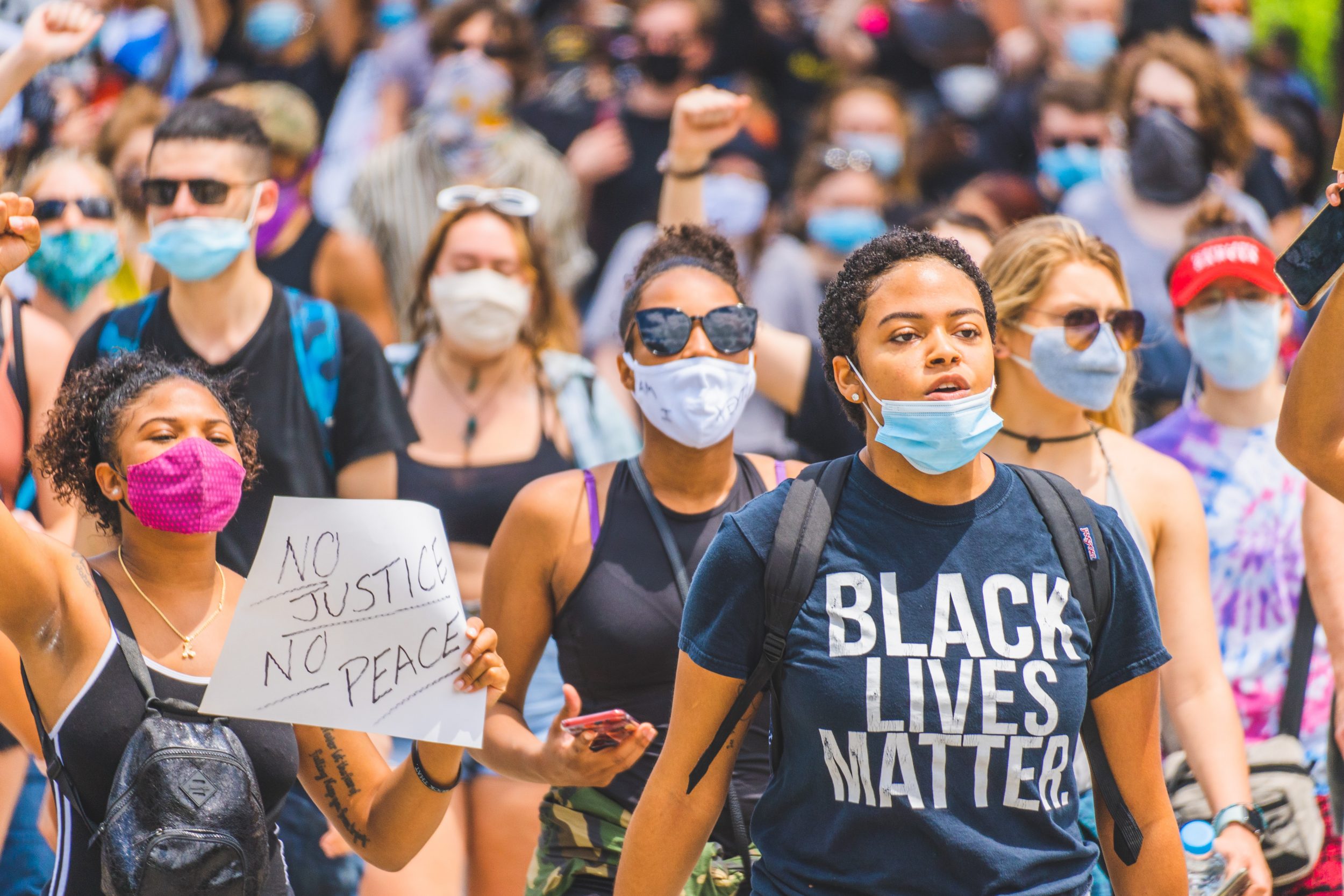 We are now witnessing the emergence of new-new social movements in reaction to, but also embedded in, the contemporary information and communication society, argues Bart Cammaerts, Professor of Politics and Communication and Head of Department in LSE’s Media and Communications Department. In this post he writes about the ways in which movements such as Occupy, #MeToo, Black Lives Matter, Extinction Rebellion and the Gilets Jaunes differ from older movements, and what are the implications of those differences for larger processes of social change.
We are now witnessing the emergence of new-new social movements in reaction to, but also embedded in, the contemporary information and communication society, argues Bart Cammaerts, Professor of Politics and Communication and Head of Department in LSE’s Media and Communications Department. In this post he writes about the ways in which movements such as Occupy, #MeToo, Black Lives Matter, Extinction Rebellion and the Gilets Jaunes differ from older movements, and what are the implications of those differences for larger processes of social change.
About ten years ago, inspired by the occupations of public spaces by the pro-democracy activists in the Arab world and the Indignados in Spain, the Occupy movement emerged. After a call to arms by the Canadian Agit-Prop magazine Adbusters, protesters set up first in Zuccotti Park in New York, then in many other places worldwide, including on the steps of St Paul’s Cathedral in London. Since then, we have seen the rise of numerous protest movements that are challenging our common understandings of what a social movement is. So, what is a social movement? How do we delimit it from a riot, from a political party, from an NGO? Occupy London, 9 November 2011. DulcieLee, CC BY 2.0, via Wikimedia Commons
Occupy London, 9 November 2011. DulcieLee, CC BY 2.0, via Wikimedia Commons
Characteristics of traditional social movements
Changemakers
A social movement’s prime reason to exist is to achieve change amongst citizens, in politics and in society at large. Although we tend to relate this to progressive change, this can also be reactionary, regressive change, taking away rights rather than expanding them, as we are acutely experiencing today. In order to achieve that change, movements assert a number of claims and articulate a set of demands. First and foremost, they identify and subsequently politicise a societal problem that needs fixing (inequality, climate change, discrimination, migration, etc.), as well as an ideological enemy that is to blame or constitutes a barrier to change (the elites, the 1%, the rich, corporations, racists, foreigners, etc.). Then, they formulate a series of solutions and propositions to solve the problems they have identified and they also foreground an urgency to act.
Action-oriented
An important part of what social movements do is the organisation of a series of different actions to highlight their cause, to demonstrate their resolve, to signal the support they have, and also increasingly to generate (social) media resonance. Over the years, activists and social movements have developed a broad toolbox of actions they can engage in, from the non-violent to the violent, from within the system to outside the system, from the formalised to the disruptive, from the understated to the spectacular, from the substantive to the performative.
Clearly identifiable ideological enemy
Through the articulation of demands and a juxtaposition with a clearly identifiable ideological enemy, social movements also construct a collective identity, a ‘we’. Think of ‘the 99%’ as a powerful assertion of this. As the metaphor of the 99% already implies, however, this ‘we’ is often made up of a very intricate and dense network of different individuals, groups and groupuscules, all affiliated in various ways with the movement and its cause. As a result of this, the meaning-making and identity-constructing processes which movements engage in is a highly dynamic, ever-evolving process and never entirely conflict-free. For example, different actors within the movement might agree on the problem that needs fixing, but virulently disagree about the way to solve it.
 Occupy London, 15 October 2011. Neil Cummings, CC BY-SA 2.0, via Wikimedia Commons
Occupy London, 15 October 2011. Neil Cummings, CC BY-SA 2.0, via Wikimedia Commons
Long-term commitment
A final characteristic of a social movement is stamina, or more concretely the ability to sustain contention and political conflict over time. To put it in Aristotelian terms: one action does not a movement make. Achieving change requires a strong and resolute long-term commitment to a given cause until victory has been reached; something the famous Cuban revolutionary slogan ¡Hasta la Victoria Siempre! encapsulated well.
New-new social movements?
The question which arises today is the following: just as traditional social movements (such as the workers’ movement and unions) emerged in conjunction with the industrial society and new social movements (such as the peace and green movements) in the wake of the post-industrial society, is it not reasonable to assert that we are now witnessing the emergence of new-new social movements in reaction to, but also embedded in, the contemporary information and communication society? And if so, in what way do movements such as Occupy, #MeToo, Black Lives Matter, Extinction Rebellion or indeed the Gilets Jaunes differ from older movements, and what are the implications of those differences for larger processes of social change?
 Gilets Jaunes, 23 March 2019. Olivier Ortelpa from Paris, France, CC BY 2.0, via Wikimedia Commons
Gilets Jaunes, 23 March 2019. Olivier Ortelpa from Paris, France, CC BY 2.0, via Wikimedia Commons
Ideologically ambiguous
One clear phenomenon we can observe at the level of demands and claim-making is that many contemporary movements – for a variety of reasons and partly pushed by an aggressive rightwing media – increasingly shy away from clear-cut ideological positioning and consider the left/right political cleaving (and its related anti-capitalist and class politics) as unhelpful and even counter-productive to their struggles. As a result of this, contemporary movements are often ideologically ambiguous at best, contradictory at worse. Think of how part of the Occupy agenda has been co-opted or ‘occupied’ by neo-fascist parties in many countries, or how the Gilets Jaunes were courted by both radical left and radical rightwing political forces. Also, while identity and environmental movements often preach intersectionality, they rarely embody it and therefore fail to resonate with certain communities and constituencies.
Multi-layered collective identities
This ideological ambiguity also translates into much more complex and multi-layered collective identities that are more fluid and lack a persuasive political narrative which can bind them together. There is also an increasingly important performative rather than lived aspect to expressing and engaging with collective identities. Contemporary movements have adapted to this, and attempt to yield this ambiguity to their advantage, for instance by embracing the support of corporate actors and values, by promoting social media based actions, or by expanding their ‘we’ as large as possible, which inevitably requires a degree of fuzziness and porous boundaries at the edges. The 99% do not all share the same interests and are not equally affected when it comes to climate change, racism, sexism, wealth distribution, etc.
The interplay between offline and online actions
Besides a more traditional set of actions, like a public demonstration, a blockade, an occupation, a petition, a situationist performance, a court action etc., a series of digital communication technologies and platforms have become central to the ways in which social movements communicate and broadcast independently, mobilise for direct action, but also how they organise themselves internally. These communication technologies are thus not merely facilitative of, but increasingly also constitutive of direct action and enabling new forms of contestation and disruption, as well as the more performative ‘low cost’ collective identity expressions mentioned above. Most contemporary movements combine what some scholars have called connective actions with more traditional offline collective actions and disruptions, which in turn are amply mediated digitally. As such, we must be careful to not associate the online realm and actions exclusively with the performative side of activism. In fact, we should stop treating the online and the offline as two separate realms all together.
 Anti-corruption and anti-austerity protests in South Lebanon, 22 October 2019. RomanDeckert, CC BY-SA 4.0, via Wikimedia Commons
Anti-corruption and anti-austerity protests in South Lebanon, 22 October 2019. RomanDeckert, CC BY-SA 4.0, via Wikimedia Commons
Technologically enabled
These same technologies enable many movements to punch above their weight and scale-up very fast with minimal resources through harnessing the strength of weak ties – the idea that a network of people do not necessarily need strong connections between them to be powerful, and can be weaponised in social struggles. Hashtags such as #GiletsJaunes, #MeToo and #BLM, for example, serve as semantic networks that coalesce and aggregate people, ideas, and information. These emerging – and often quite heterogeneous – networked publics can then subsequently be activated and made to act, whether online or offline. Through this, collective identities, togetherness and belonging are created.
The COVID-19 pandemic showed how important the online context was to sustain a whole series of struggles which were basically impossible to continue offline. Even so, #BLM also demonstrated that the energy and fire of offline activism cannot be fully contained, even not during a pandemic, as we saw millions of people across the world pour onto the streets to protest structural racism, police violence and colonialism.
Amorphous and less hierarchical
The centrality of social media and communication technologies has also given rise to the idea and practice of leaderless or at least more horizontal, less top-down movements and in some cases, such as the Hong Kong Pro-Democracy movement, the construction of an amorphous movement devoid of hierarchy was a strategic tactic in reaction to heavy state repression. Also, in the western world, apart from Greta Thunberg, contemporary movements often lack a highly visible charismatic leader figure who serves as spokesperson and ‘face’ of the movement. Instead, horizontal structures and collective decision-making are favoured, but that does not necessarily mean leaderless. Through action, through doing and through the accumulation of activist capital, leaders inevitably emerge, even in anarchist collectives, such is the iron law of oligarchy.
Shorter attention spans
This leads me to the final characteristic which distinguishes contemporary movements and that is stamina, resolve, and persistence. It is undeniable that the weak ideological positioning, as discussed above, the more fluid collective identities, and the fast-paced digitally mediated societies we live in have shortened attention spans, not only of the media, but also amongst citizens and activists alike. As a result of this, while the new-new movements might be able to scale-up much faster than in the past, they are also more prone to fizzle out more quickly. The question is whether this is necessarily problematic? May ’68 has this mythical status today as the birth of the new social movements, but it related to a burst of a few months of intense protest activity across the world. In a similar vein, will people look back in 50 years’ time and see the Arab Spring and Occupy as the start of new-new social movements? I think we might.
 A word of caution: claims of new-ness always need to be approached with great care and with the explicit acknowledgement that processes of discontinuity and disruption invariably go hand-in-hand with processes of profound continuity and realignment. It is thus not because an online repertoire has emerged that therefore the old offline ways of protesting and disrupting have disappeared or have become less relevant. On the contrary even, one tends to reinforce the other. As many examples of contemporary movements highlight, innovative activist practices and traditional activist routines co-exist and interact, leading to innovation. The information and communication society has clearly produced new emancipatory potentials, but equally so, it has presented social movements with a set of new constraints and challenges.
A word of caution: claims of new-ness always need to be approached with great care and with the explicit acknowledgement that processes of discontinuity and disruption invariably go hand-in-hand with processes of profound continuity and realignment. It is thus not because an online repertoire has emerged that therefore the old offline ways of protesting and disrupting have disappeared or have become less relevant. On the contrary even, one tends to reinforce the other. As many examples of contemporary movements highlight, innovative activist practices and traditional activist routines co-exist and interact, leading to innovation. The information and communication society has clearly produced new emancipatory potentials, but equally so, it has presented social movements with a set of new constraints and challenges.
These constraints and difficulties situate themselves at several levels and are not exclusively media or communication-related. I limit myself here to four:
1) achieving a truly intersectional meta-narrative, and linked to this, reconciling competing and contradictory collective identities and interests,
2) building movement structures that are agile enough to react swiftly to changing circumstances and robust enough to enable sustaining a struggle over time,
3) needing to be wary of being so dependent on corporate spaces to self-mediate a struggle, to mobilise for action, and to organise contestation – the empire always strikes back,
4) organising actions that enable both ‘low-cost’ performative expressions, as well as serious enough disruptions to the day-to-day business of elites and ideological adversaries.
Because without the latter … nothing ever changes.
This article gives the views of the author and does not represent the position of the Media@LSE blog, nor of the London School of Economics and Political Science. This post is based on the article ‘The new-new social movements: are social media changing the ontology of social movements?’, in Mobilization Volume 26, Issue 3, pp. 343-58.




